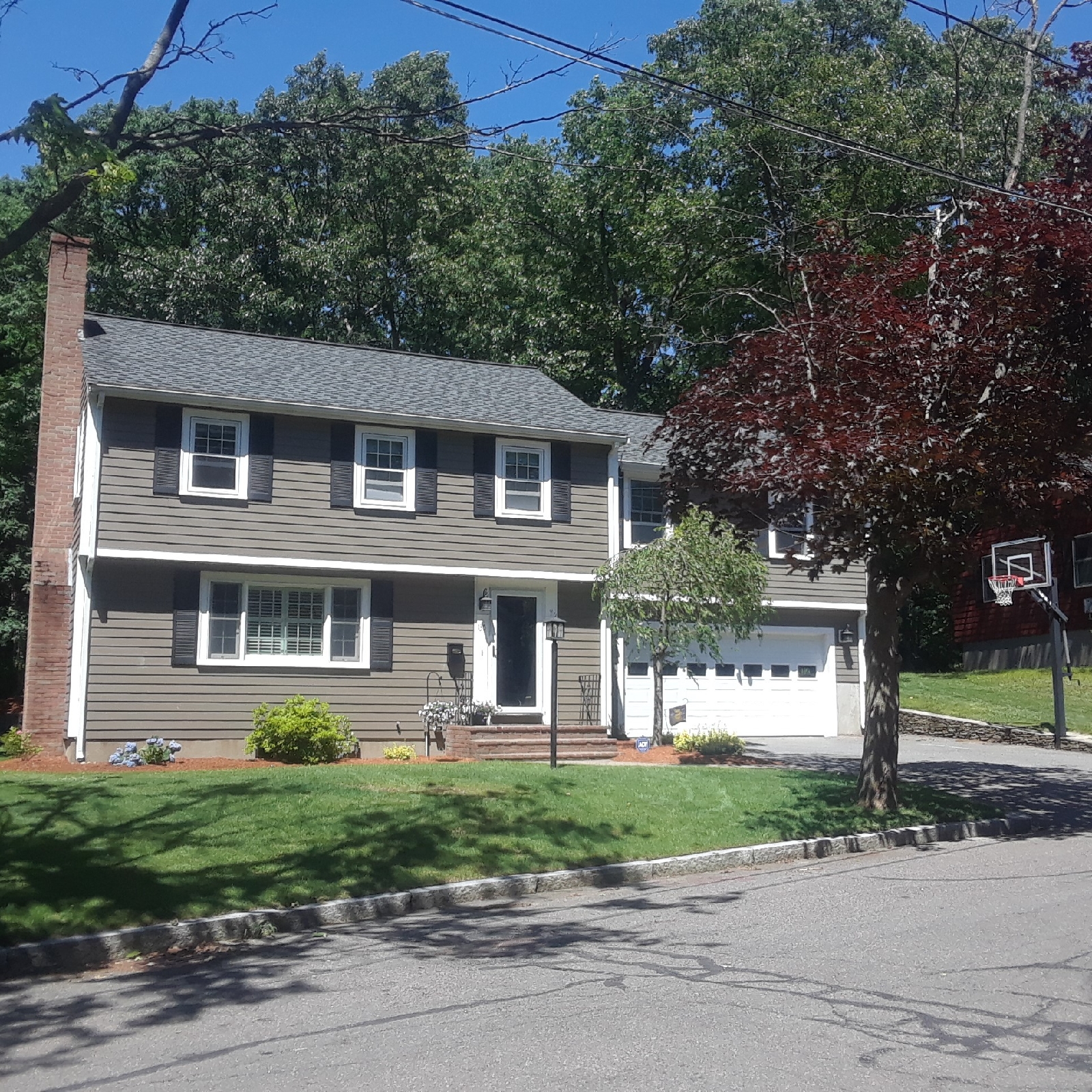By the middle of the 20th century, much of Melrose had been built up. Yet the years of the baby boom put new pressures on the city. All around town, developers bought properties which had earlier been considered hopelessly far-flung or impossible to build upon. In 1952, permission was granted to develop the one remaining unprotected wild part of Melrose that lay just off of Main Street, Boston Rock. It would soon become a showcase for some of the great American postwar architectural styles, the ranch, the split-level ranch, and the garrison colonial—usually with attached garage.
Number 135 Boston Rock Road is a garrison colonial of the type that had been built for decades. The key difference from those earlier models was the inclusion of the two-car garage within the structure of the house. Moving down the street, number 121 is also a garrison colonial, yet the architect opted for the modern, split-level design, with three floors of living space. The reason why is simple enough: like many Boston Rock houses, the property backs onto a steep drop-off, and the split-level model allowed the architect to build to the contours of the slope.
Number 45, on the other side of the hill, is a split-level ranch, featuring a projecting shallow gable over the two-car garage. It likewise backs onto a steep hill, and may be one of the houses that was sold as an “embankment ranch,” so-called because of its position on the slope. Number 42, across the street, does not face a cliff, and was instead built as a single-level traditional ranch.
Although houses like these are sometimes derided as boring or derivative, in many ways they took their philosophy from Modernism, creating homes based on standard plans, made with mass-produced materials, and responsive to the needs of the young families who moved into them. Here were modern houses that GIs returning from the front could afford to buy.
The sad postscript is that not all Americans could move into these homes, as Black veterans were denied GI bill benefits and federally-backed mortgage loans. Melrose gained 6,000 new residents between 1950 and 1970; the total Black population topped out at 68.







No comments:
Post a Comment